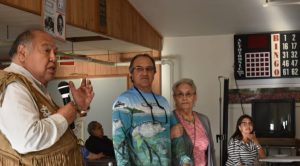Sealaska’s $4.2 Million CARES Act Allocation: Part of a Larger Pool of Funding to Benefit Southeast Alaska Natives

The U.S. Department of the Treasury created the formula for how CARES Act money was allocated to tribes and Alaska Native corporations (ANCs). The most important thing is that Alaska Natives in Southeast Alaska are receiving additional support at a crucial time.
Sealaska is working out the details of how the $4.2 million allocation will be distributed to benefit our shareholders. We know this has been a difficult 18 months and that many are still struggling. Additional information about our distribution plan is coming soon. Please keep an eye on your email, our social media channels and MySealaska.com for more information.
Here are the most important factors associated with our allocation, with details on each below.
- The Treasury formula relied on a tribal population assessment developed in connection with housing-related services. In Southeast, tribes provide housing services, so Sealaska didn’t receive any funding in this category of the formula.
- Total employment was also a factor. ANCs that received more than Sealaska did most likely had a higher employee count.
- Sealaska complied with all application requirements and filled everything out in full and on time.
The formula favored tribes and ANCs that provide housing services
Because tribes are the primary administrators of Native American Housing and Self Determination Act (NAHASDA) services in Southeast Alaska, they received the bulk of the funding through Treasury’s CARES Act formula. The housing formula uses the population served by that tribal housing provider. We do not have a service population through NAHASDA because that population is served by Tlingit & Haida Regional Housing Authority. This connection to housing services was the largest factor in the formula, and Sealaska received no funding in this category, which significantly impacted our total.
Funding flowed to our region to benefit our people – it just flowed primarily through tribes rather than through Sealaska. Some have asked why CIRI and Doyon received so much more than Sealaska. The reason is that in their large population centers, they provide more of the housing-related services in their regions.
Our shareholders, most of whom are also tribal citizens, are eligible to receive CARES Act funding through their tribes and village corporations. Tlingit & Haida, Goldbelt, and others have their own programs underway now.
Sealaska’s employee count affected the allocation
The Treasury Department formula used employment as a factor in its formula. Sealaska has close to 1,000 employees. While that is a significant increase from a few years ago, Alaska Native Corporations with more than 1,000 employees received more CARES Act funding than Sealaska did, all else being equal.
Our application was complete and timely
Sealaska worked closely with the Treasury Department to submit its application, participated in informational webinars and maintained close communications with contacts from the department to ensure our application met all the requirements.









 Previous
Previous